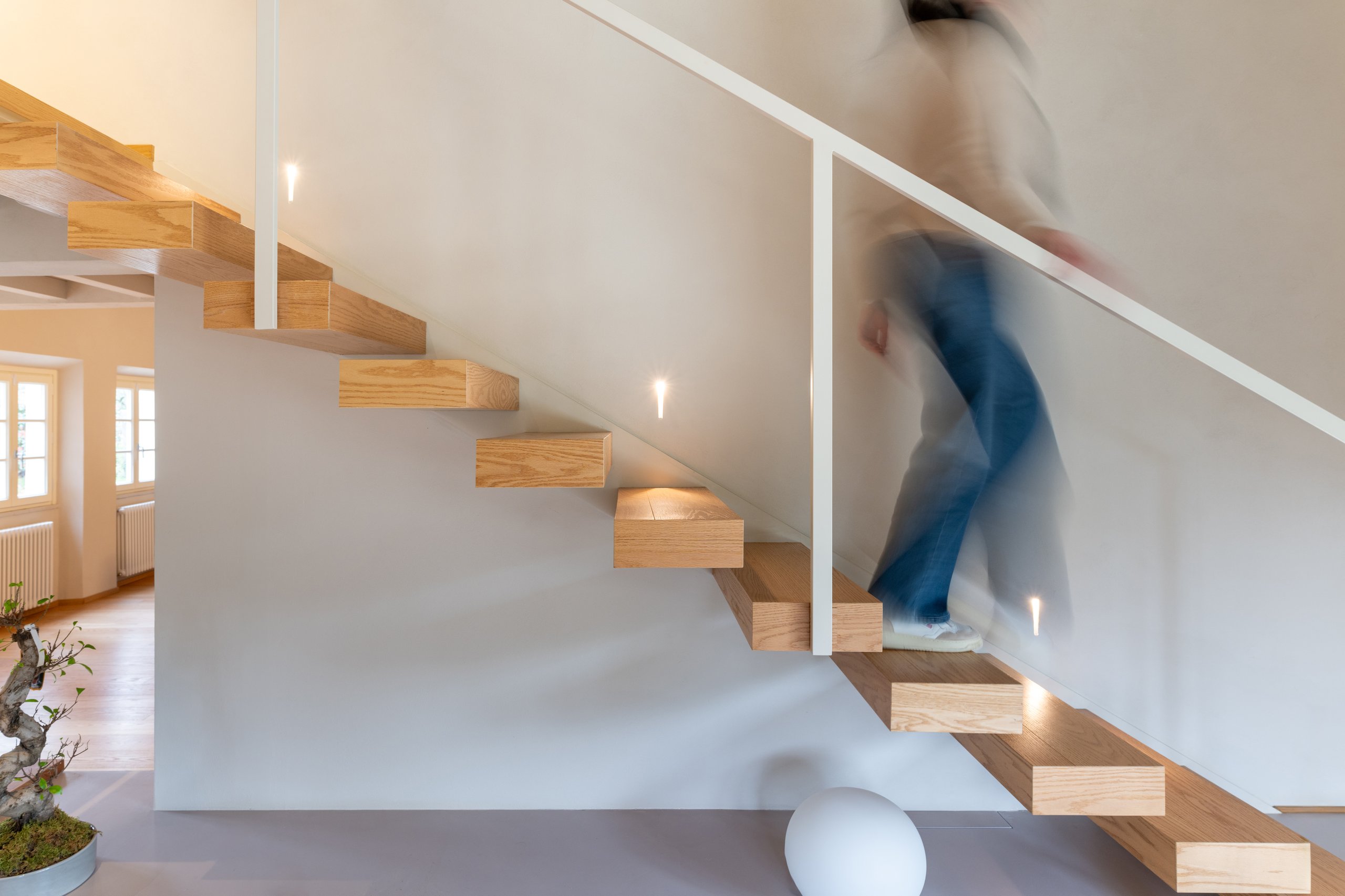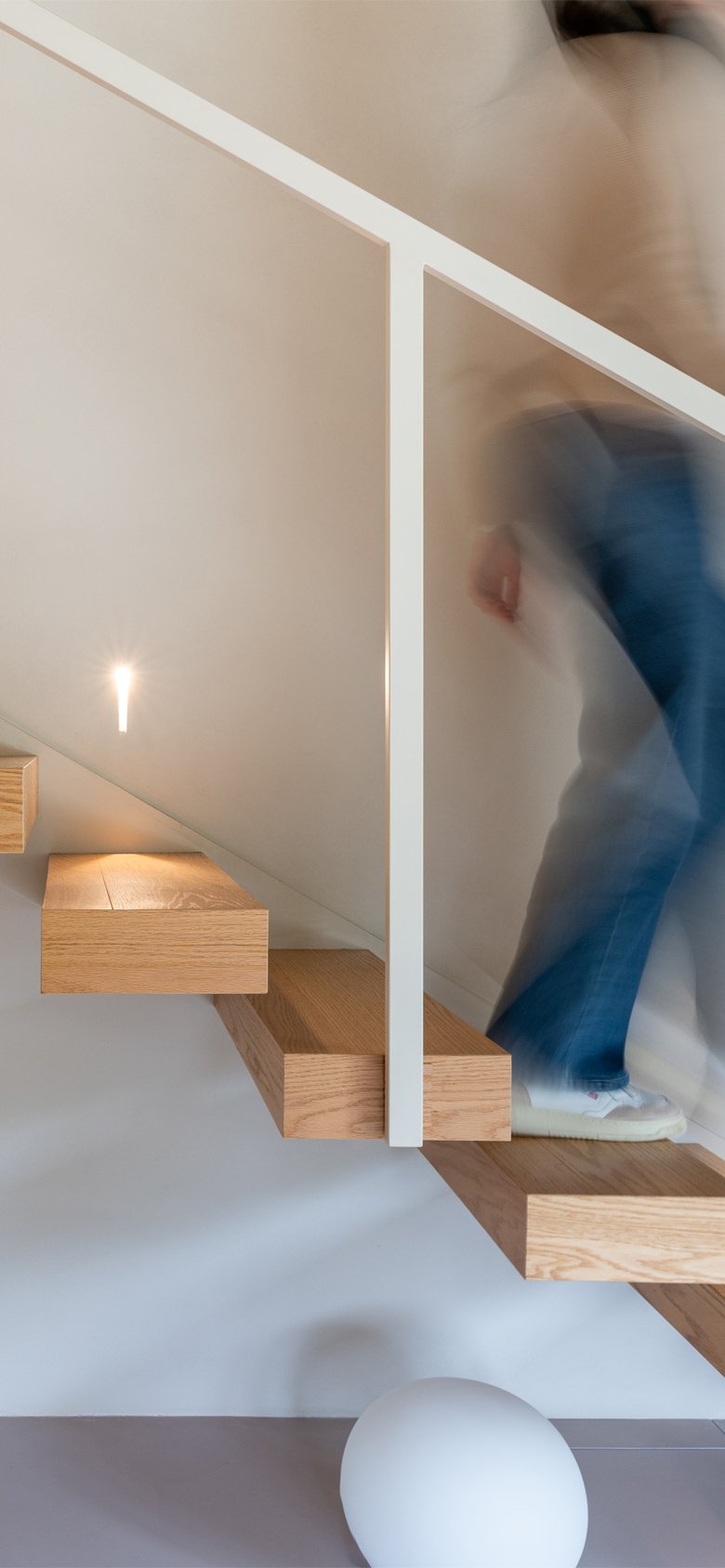



What is a construction site?
When thinking about building a house, one often thinks only of a construction site. But the construction of any type of structure, whether it be a home, a workspace, or a public space, involves the synergistic work of various trades before, during, and after the actual construction. This is why we like to imagine the construction site as a place where words become tangible and drawings take the concrete form of reality. In this setting, the architect is not just the creator of the idea but the catalyst of a collaborative process. Their vision, meticulously verified in the months leading up to the start of work, guides the process, while the work of the tradespeople gives life and substance to the project.
Carpenters, blacksmiths, upholsterers, flooring specialists, resin applicators, parquet installers, and painters—all these figures work closely with us. Watching them at work often means witnessing the transformation of one's thoughts into something material. This is why the relationship between the architect and the tradespeople is crucial; without true understanding, the result will never be as desired.
The Architect Guides, the Craftsman Creates
Despite the excitement of seeing the construction process of a house, step by step to the finished element, nothing is more thrilling and satisfying than delivering a final work to the client that matches their vision. For months, the project has been guided by us architects, having a clear understanding of the stories and desires of those who entrust us. From this, we first outline ideas, then more detailed projects, and finally move on to practice.
Here is where the collaboration with the tradespeople begins, and after many years of experience in the field, we decided to draft a small list of "essential things for a healthy and lasting relationship with other professions."
Here is our brief list; we hope you find it useful.
Communication
The architect cannot simply transfer their ideas to the craftsmen but must communicate them clearly and understandably. Through sketches, drawings, and detailed explanations, they create a bridge between their vision and the practical skills of the workers.
The architect must not only speak their own language but also that of the craftsman to avoid misunderstandings along the way.
Mutual Trust
The architect must trust the skills and experience of the tradespeople, while the latter must trust the vision and guidance of the architect. A relationship based on respect creates a spirit of collaboration that fuels success, allowing obstacles to be overcome with enthusiasm and a positive attitude.
Trust means, first and foremost, believing that the direction taken by others is the right one and knowing which parts of the journey to undertake together.
Empathy
The architect must understand the challenges of the craftsmen, as these professionals often deal with continuously evolving materials, technologies, costs, and availability
On the other hand, the tradespeople must embrace the architect's priorities since the architect holds the project and knows exactly the desires of the final client. Only by developing an empathetic attitude toward each other can creative solutions be found that satisfy both the aesthetic and functional aspects of the project.
Mutual respect
The architect is not just the chief designer but a team member. Respecting the work and experience of the tradespeople means recognizing the value of every contribution to the creative process. Respect, in this case, means honoring the other's skills and listening before proceeding in an individualistic and hurried manner.
It’s about building bonds that last in time. Through clear communication, empathy, mutual respect, and trust, architects and tradespeople can turn an abstract idea into a tangible reality.
Indeed, it is not just about constructing well-made buildings but also about building bonds that stand the test of time. In a world where technology often dominates, the value of craftsmanship and human collaboration in the creative process remains undeniable. The cooperation between designers, architects, and tradespeople represents an extraordinary combination where art and innovation merge to create unique and extraordinary works.
A creative exchange that promotes the multiplicity of skills, creativity, and experience. A relationship that, if fueled by the right enthusiasm and respect, always produces something greater than the sum of its parts.
And this is the true outcome of a good architectural project.
